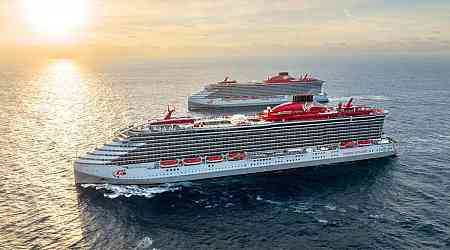Today’s post is coming a bit earlier than normal, and that’s because Alaska has just announced a whole lot of news in advance of today’s investor day. In addition to the blockbuster announcement that flights from Seattle to Tokyo/Narita will start in May (plus Seoul/Incheon in the fall), Alaska also put out impressive forward-looking guidance, seeing much bigger benefits from the Hawaiian merger than originally expected. This is an airline that has been firing on all cylinders and is now ready to reach aggressively for something bigger.

Sure, you can tune in to the investor day presentation if you’d like, or you could listen to The Air Show interview that we conducted with CEO Ben Minicucci last Friday. (Or you can be like me and do both.) We went into the interview knowing everything you’ll learn today, and that means we had a wide-ranging, fascinating discussion. This episode is another super-sized version, and you’re gonna wish it was longer. Ben had a lot to say, including talking about what this move means for… Delta?

Listen on SpotifyListen on Apple PodcastsListen on AmazonListen on Pocket Casts
We had all assumed that Alaska would eventually fly from Seattle to Asia, but I didn’t expect it this quickly. Alaska will move Hawaiian’s Tokyo/Narita slot to point airplanes toward Seattle instead of Honolulu in May. (Don’t worry, Haneda will run from Honolulu double daily, up from 12x weekly now.) Seattle is ground-zero for the airline’s widebody international flying opportunity, and there will be much more to come.
Long-haul is the one thing Delta does from its Seattle hub that Alaska couldnʻt. Now it can. Ben had strong words about what this means for the airline competitively in Seattle… and globally with the big four. He thinks Alaska belongs in that club and can compete.
Today, we also learned that the dual-brand strategy has settled on my favorite option. Everything that touches Hawaiʻi will be under Hawaiian Airlines while everything else will be Alaska Airlines. Ben talked more about that rationale with us on the podcast and mentioned what it might look like in the early days.
Of everything we discussed, what caught my attention the most was just how much combining these two airlines will enable Hawaiian’s fleet of just over 60 passenger airplanes to be better utilized. How much? Alaska says it can squeeze an extra 7 airplanes’ worth of flying out of that small fleet, which is tremendous. The A321neo fleet alone will see a 25 percent improvement. Some of that will come from new routes, but it will also be from flowing airplanes better in the combined network. Next summer, for example, the A330 is going on the Seattle – Anchorage route. The changes will be loaded soon.
There were so many questions that we wanted answered:
Is there a place for the Airbuses in the combined fleet? (And for the geeks… will we see a 737 with Pualani on the tail?) What does the future of premium look like? Where does Portland fit in? How will Alaska compete on transcon? Why is cargo such a big opportunity? Are Chester and Pualani dating?Ben did not blow these off. He gave us real answers, at least, the answers that they know today. (Ok, I don’t have answers to that last question, but I think we all know what’s going on here.) Sometimes the answer was “we need to test and see,” and that is going to be a big piece of the airline’s plans for the near future.
From a high level, this is an airline that is taking advantage of its stellar performance and solid balance sheet to push itself forward aggressively thanks to this unique opportunity with the Hawaiian integration. The rest of the industry should be paying close attention.

Listen on SpotifyListen on Apple PodcastsListen on AmazonListen on Pocket Casts

























